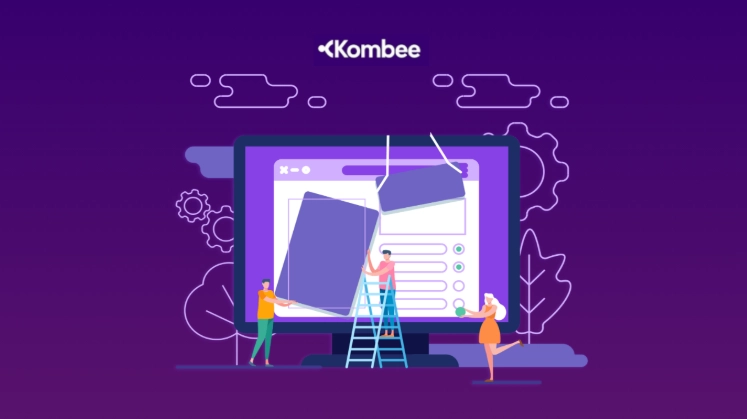Introduction
As far as technology projects are concerned, one of the earliest choices your company will have to make is how to assemble your development team. Do you opt for in-house hiring or take advantage of IT outsourcing via IT staff augmentation? In today's fast-paced dynamic tech environment, it can make a big difference in the success of your project, schedule and budget.
In fact, 78% of businesses report that outsourcing IT has been effective in reducing operating costs and improving efficiency. But the choice between internal personnel and outsourcing IT management depends upon several considerations.
In this blog, let’s understand key differences, strengths and weaknesses to help you make the right decision for your next project.
What is In-House Development?
In-house staffing means creating a team of permanent, full-time employees working directly for your business. These workers tend to be well ingrained in your business culture and processes. An in-house development team will work on your projects all the time, offering stability, continuity and true comprehension of your business's needs and objectives.
Advantages of In-House Development:
- Best for long-term projects that need extensive integration with your business.
- Offers complete autonomy over your team, schedules and intellectual property.
- Enables an excellent alignment with company culture and business objectives.
What is IT Staff Augmentation?
Alternatively, IT Staff Augmentation allows you to make contract or short-term hires from outside your company to supplement your in-house talent. These specialists, typically hired through staffing firms or outsourcing providers, deliver expertise in such fields as cloud development, AI or cybersecurity.
Advantages of IT Staff Augmentation:
- Most suitable for quick team scaling or managing specialized work without permanent staff.
- Can scale team size and capabilities according to the project requirement.
- Suitable for short-duration projects or where specialty skills are a prerequisite.
Key Differences Between In-House Development and IT Staff Augmentation
Let's proceed to the most critical differences of outsourcing IT management vs in-house employment to help determine which path is best for your company.

Not sure which model fits your project best? Kombee can help you assess your needs and recommend the right approach. Schedule a free consultation today.
When to Use In-House Development?
In-house development fits best for those projects that require tight integration with your business, long-term involvement and ongoing development. Some situations where in-house personnel excel are:
- Higher Security and Confidentiality Requirements: If your project requires highly sensitive or proprietary information than in-house teams are safer since it eliminates third-party exposure risks.
- Long-Term Projects: For projects that require ongoing development and long-term maintenance e.g., SaaS applications then in-house teams provide stability and continuity.
- Cohesion and Retention of Knowledge: In-house development ensures a strong team culture and deep knowledge sharing, which can be good for complicated, long-term projects
When to Utilize IT Staff Augmentation
IT staff augmentation best fits projects that require flexibility, specialist skills or rapid scaling. Use outsourcing of IT through augmentation in the following situations:
- Short-Term, Specialized Projects: If you need talent in specific technologies or skills for the short term then IT staff augmentation provides you with immediate access to experts without long-term commitment.
- Tight Deadlines: If you're dealing with aggressive timelines and require additional hands in a hurry then IT outsourcing allows you to scale up quickly without the lag of old-school recruitment.
- Budget Constraints: Small businesses and low-budget companies can make use of staff augmentation as it allows to only pay for the resources and talent required
Measuring Success for Web and Mobile Apps

Success isn't merely in going live with an app, but in continuous improvement. Some of the most important KPIs to look out for are as follows.
Hybrid Models: The Best of Both Models
The majority of companies consider the hybrid model the combination of in-house development and IT staff augmentation the most successful. With the support of an in-house core team to perform significant strategic activities, you are able to use outsourcing IT management for gap filling, leveling workload peaks or obtaining unique skills.
This gives you a means of retaining control over significant processes while enjoying flexibility to upscale your team if and when required.
At Kombee, we specialise in hybrid development solutions, blending in-house and augmented teams for the perfect fit. Get in touch to build your ideal team.
Conclusion
A choice to keep development or IT personnel in-house or staff augmentation is made by your project's cost, schedule and need. In-house personnel are ideal for large, long-term, high-commitment projects, since they facilitate deep integration as well as a single team. IT staff augmentation is well suited for those projects with short-term or rapidly evolving requirements.
Most businesses combine and hybridize both approaches for the best balance of control, cost and flexibility. At Kombee, we assist you in selecting the appropriate model for your specific needs so that you scale effectively. Contact Kombee today to make the ideal choice for the growth and success of your business.
Frequently Asked Questions
1. What are the pros and cons of in-house development vs. IT staff augmentation?
In-house offers full control and long-term alignment but is costly and slow to scale. Staff augmentation is flexible, faster, and cost-efficient, but may lack deep integration with company culture.
2. When is IT staff augmentation more cost-effective than hiring full-time developers?
It’s more cost-effective for short-term projects, urgent scaling, or when specialized skills are needed temporarily without the long-term costs of salaries, benefits, and onboarding.
3. How do I decide which model fits my project timeline and tech needs best?
Choose based on project duration, required expertise, budget, and urgency. For fast, flexible scaling, use augmentation; for long-term, core development, in-house may be better.






